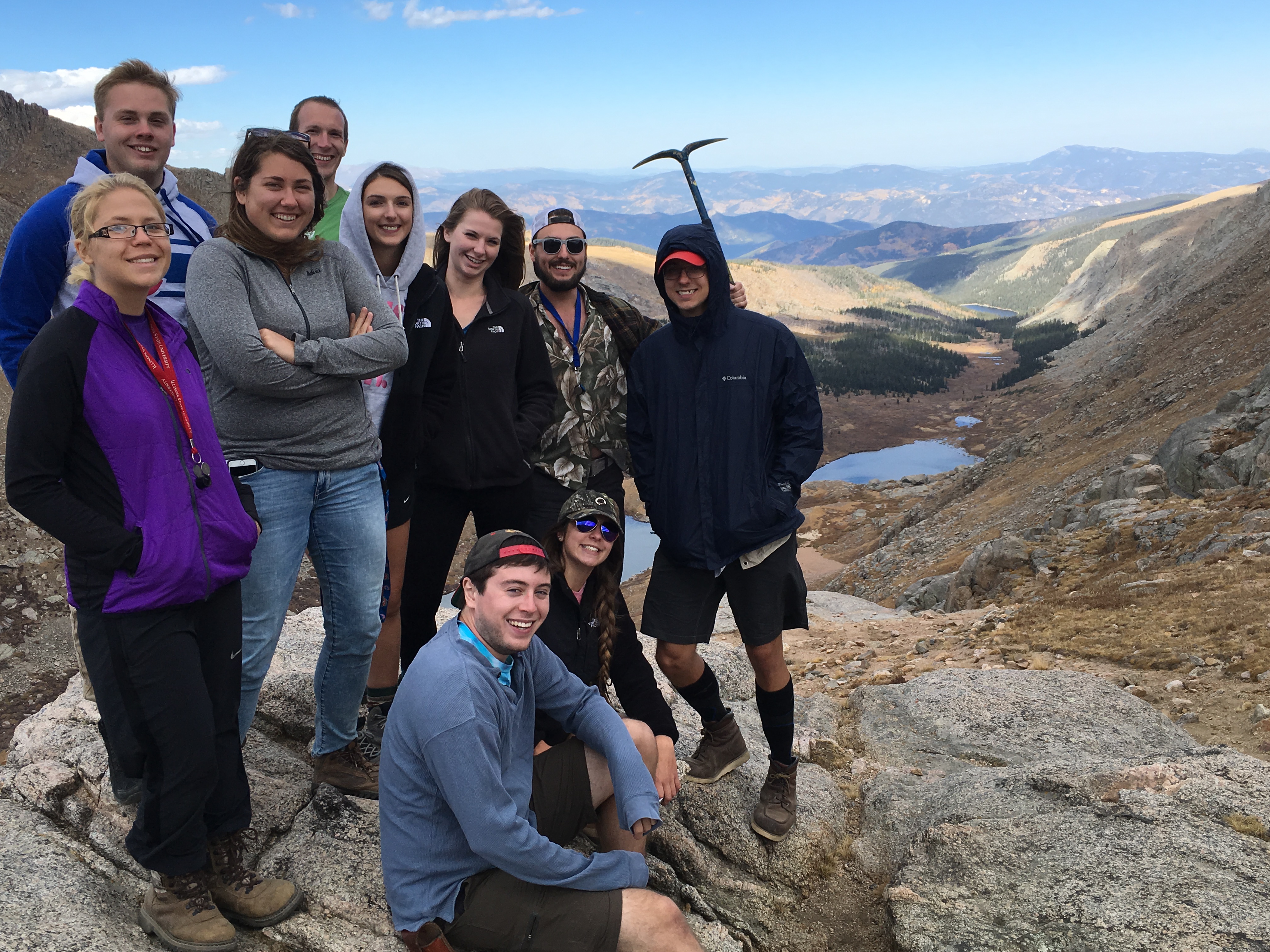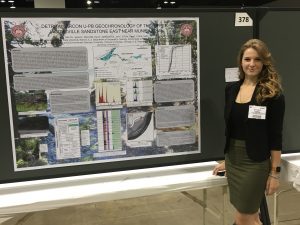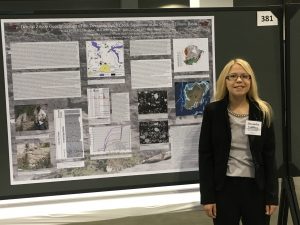Illinois State undergraduate students, under the guidance of Dr. David Malone, Lexi Wallenberg and Jessica Welch presented the results of their geological research in September at the Geological Society of America Annual Meeting in Denver.
Welch’s research involved determining the provenance of the Jacobsville Sandstone of the Lake Superior Basin.
About 1.1 billion years ago, Lake Superior was the site of rifting, where North America began to split, much like east Africa is doing today. The Lake Superior Rift failed about 1 billion years ago, and began to close back together instead. The Jacobsville was deposited during and after the rifting.
Welch’s work promises to better constrain the age of the Jacobsville and the mechanism for rift failure.
Wallenberg’s research involved determining the provenance of the Devonian Dutch Creek Sandstone in the Illinois Basin. Workers had believed that Dutch Creek was weathered along the Ozark Dome and then was transported east into the Illinois Basin.
Wallenberg’s work revealed a northerly source for the Dutch Creek instead, and that the sand was transported by wind rather than water to where it was deposited. This work promises to test the viability of using zircon transport as a proxy for ancient wind patterns and strength.
Zircons are wonderful minerals in that the uranium-lead isotopic clocks ticks better in zircon then in any other mineral. Detrital zircon geochronology has become the method of choice for determining sedimentary provenance, or source area.
Sandstones likely contain zircons from multiple source areas, thus we can determine the flow paths of ancient rivers, the emergence of new source areas through tectonic processes, and the burial and confinement of old source areas. Therefore, to characterize fully all components of the sedimentary provenance, all ages within a population of detrital zircons from a single sandstone sample must be determined.
Both students used Illinois State Foundation funds to support their travel to Tucson, Arizona, in late January to use the LA-ICP-MS to gather new data. Foundation funds also supported the analytical costs. The trip to Tucson followed zircon separation during winter break. The data that they gathered advanced the following projects:
- Jacobsville Sandstone provenance from the Canadian side of Lake Superior to determine whether or not there is a geographic variance to the provenance of the unit.
- Borden Siltstone provenance from samples collected from drill core in the Eastern Illinois Basin. This project is in collaboration with Illinois State alumnus Patrick McLaughlin ’99 at the Indiana Geological Survey. We hypothesized that the Borden marked the transition from continental to Appalachian derived sediment. We were wrong. The Borden has a unique northerly provenance and was most likely transported by wind rather than water.
- Lamotte Sandstone (Missouri) provenance will help us round out a Cambrian data set needed for the submission of an Antarctic National Science Foundation proposal.
- Oman tillite provenance to complete the data set of a 10-year, five continent, 4,000 grain project that will provide constraints on Permian paleoclimate and ice stream trajectories in Gondwanaland as Pangea was assembled.



